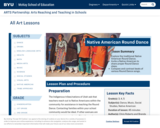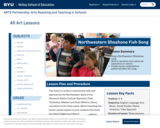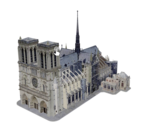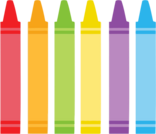
Check out an amazing 3D model from Google Arts and Culture!
- Subject:
- Educational Technology
- Professional Learning
- Material Type:
- Interactive
- Provider:
- Provider Set:
- Google for Education
- Author:
- Google Arts and Culture
- Date Added:
- 05/18/2022

Check out an amazing 3D model from Google Arts and Culture!

Learn about artist Meta Warrick Fuller--forerunner to the Harlem Renaissance--in this digital short from Unladylike2020. Using teaching tips, discussion questions and vocabulary, students examine the life, impact and historical era in which Warrick Fuller lived.
Students will learn how modern day immigrants may be pilgrims in their own respect. They will learn what immigrants and pilgrims are, and be assigned to demonstrate learning about an immigrant in their ancestry.

Join Google Arts and Culture as they share a unique tortilla found in Argentina!

Check out an amazing 3D model from Google Arts and Culture!

Hip hop music is a staple of music lovers around the world. With its strong, rhythmic beat and lyrical rap vocal tracks, the genre that originated in New York City after the Civil Rights Movement has grown into one of the most popular styles of music in the world.
In this lesson, students will learn about hip hop as a tool for empowerment and critically analyze its place in American history as they read, analyze, and respond to film clips and lyrics from select songs. Through the discussion questions and activities, students will question the historical complexities and come up with their own interpretation of how music can be a tool for empowerment.
Students will answer questions before, during, and after watching the clips. Teachers may choose to have students create a social post/poem/rap about a social issue or create a presentation about a song with social justice themes. The lesson also allows students to explore other songs with social justice messages, across genres.
The activities in this lesson can be implemented across curricula, including, music, history, ELA, and non-academic classes (e.g., advisory).
More About This Resource
About the Authors:
This resource was developed by PBS Digital Innovator All Star Educators. The PBS Digital Innovator All Star program brings together a community of PreK-12th grade educators, who are hometown thought-leaders and classroom changemakers, for ongoing professional learning and growth. The program creates opportunities for participants to share strategies, learn from peers and leverage PBS platforms to elevate their own ideas and voice.
PBS Digital Innovator All Stars are characterized by their ability to seamlessly integrate media and digital technology into their learning environments, inspiring students to use media and emerging technologies in responsible, effective and empowering ways.
David Upegui is a Latino immigrant who found his way out of poverty through science. He currently serves as a science teacher at his alma mater, Central Falls High School (RI) and as an adjunct professor of Education. His personal philosophy and inclusive approach to science education have enabled students to become problem-solvers and innovative thinkers. He has a keen ability to engage students in learning, exploring, and contributing to science. He received the NABT’s Outstanding Biology Teacher Award (2021) and the Evolution Education Award (2014) as well as the Presidential Award for Excellence in Mathematics and Science Teaching in 2019 (2017 cohort). Upegui started, and runs, the school's Science Olympiad team and has contributed to several publications on science education and appropriate pedagogy. He completed his doctoral degree in education at the University of RI, focusing on science education and social justice.
Darnell Williams was born on the south-side of Chicago. As a child his family traveled to different parts of the United States during his father’s service in the Navy. Williams would go on and obtain his B.A in Childhood Studies of Psychology at Rutgers University- Camden. Soon after, Williams would become an English Language Arts teacher and Social Studies teacher. In 2020 Williams would have the honor of becoming a Digital Innovator and work on several projects. During this time, Williams would also obtain his Masters in Educational Leadership. Williams would be recognized for his educational leadership during the Covid-19 pandemic. He is currently the Supervisor of Pupil Services in Hamilton Township School District in Mays Landing, New Jersey. Williams in dedicated to serving staff and students in mental health and equity.
Sensitive: This resource contains material that may be sensitive for some students. Teachers should exercise discretion in evaluating whether this resource is suitable for their class.

In this video segment from Religion & Ethics Newsweekly, learn about the daily prayer rituals of the Muslim faith and their significance in the life of a Muslim living in America.

This lesson explores what qualities make a good friend. This is a way to help students become aware of positive and inappropriate behaviors.

Students will list three or more types of evidence of prehistoric cultures that encouraged archaeologists to investigate the marshes around the Great Salt Lake. Students will also explain why it is important not to disturb archaeological remains.
This lesson plan suggests many ways to improve students' patterning skills.

Explore the traditional Native American Round Dance. Invite a Native American to share proper Round Dance steps. Compare and contrast beats of various Round Dance songs.
The Indigenous tribes/nations of Utah ask that teachers reach out to Native Americans within the community for assistance in teaching the Round Dance. Contacting families within your school community would be ideal. If other avenues are needed, contact your district Title VI coordinator or Indian education department within your state education system.

This lesson challenges students' views of Native Americans as a vanished people by asking them to compare their prior knowledge with information they gather while reading about contemporary Native Americans.

This article provides background information related to natural resources of the poles, and renewable and non-renewable energy.

This Nearpod answers the essential question: What makes Utah's geography unique? It introduces the learners to the three major regions found in Utah. This lesson has the vocabulary needed to understand landforms, names the three regions, shows pictures of each region and takes the learners on a virtual fieldtrip to each region.

Check out an amazing 3D model from Google Arts and Culture!
This lesson helps students create a newspaper that will demonstrate their understanding of the processes of revolution, representative people in a revolution, winners and losers in a revolution, and the impact on the future. This lesson plan integrates social studies, language arts, art, and technology. Teachers can determine how expansive this task will be. What is essential to the assignment is that students demonstrate an understanding of the standard.

Sing a Northwestern Shoshone song.
Write a narrative story about an experience in nature.
Create music compositions patterned after the song.
This lesson is written in partnership with and approved by the Northwestern Band of the Shoshone Nation Cultural Specialist, Patty Timbimboo-Madsen and Paula Watkins, library consultant to the tribal nation. Before teaching this lesson, please explain to your students that there are many Indigenous tribes in Seal for the Northwestern Shoshonethe United States and that this lesson specifically focuses on a song of the Northwestern Band of the Shoshone Nation and does not represent other Native American groups. It is the hope of the Northwestern Shoshone that other native tribes will respect their choice to share this aspect of their culture.

The student will be able to understand the tragic circumstances of the Bear River Massacre. They will also discover the adaptability and determination of the Northwestern Band of the Shoshone in their ability to repurpose the site.

Check out an amazing 3D model from Google Arts and Culture!

Children will listen and sing along to the alphabet song as the letters are being pointed to on a paper, chart, or on the wall. Allow children to help point to the letters as they are ready.